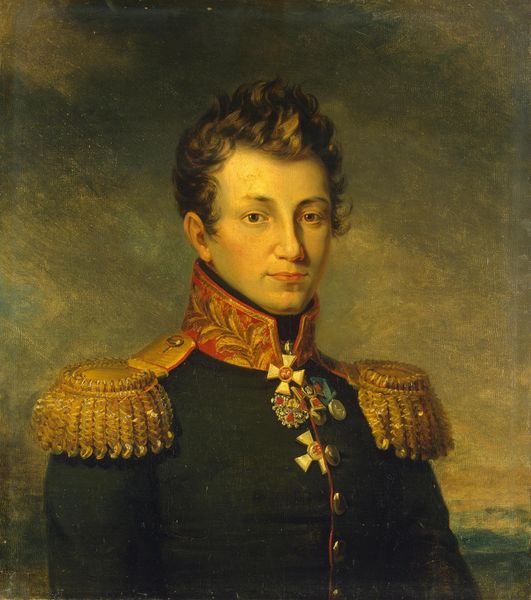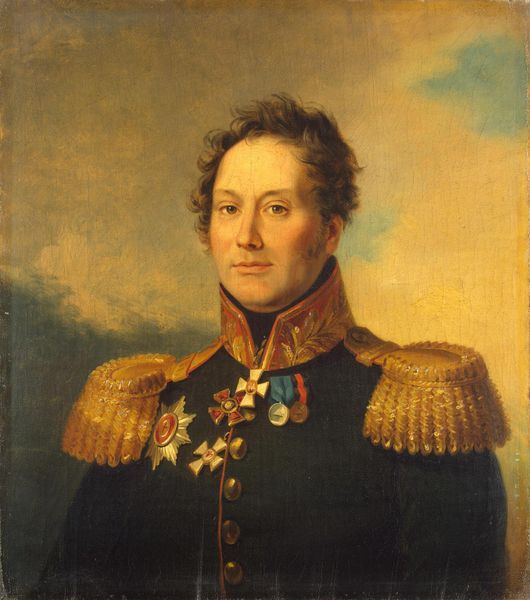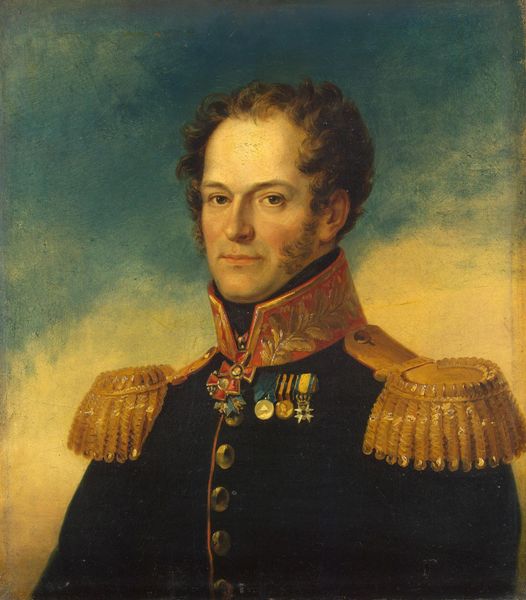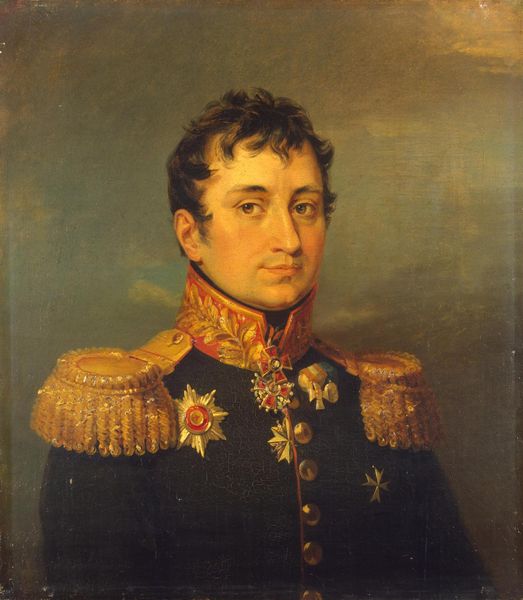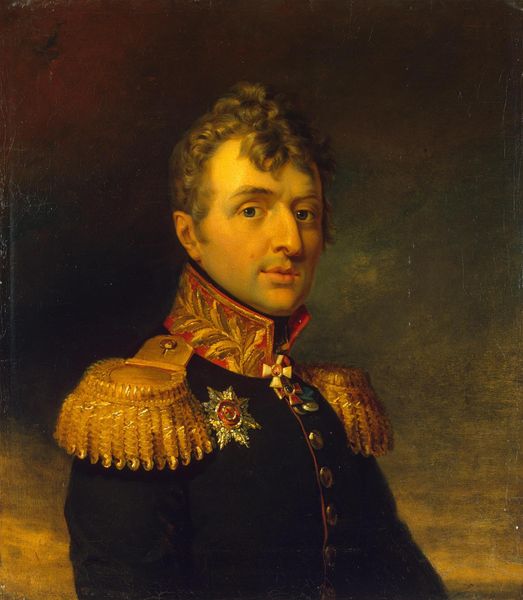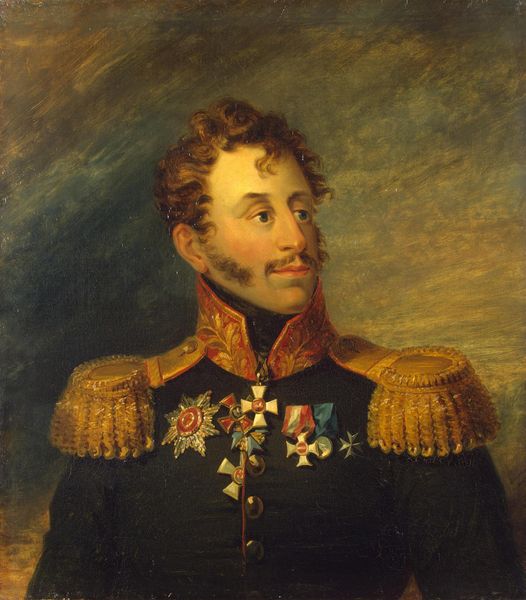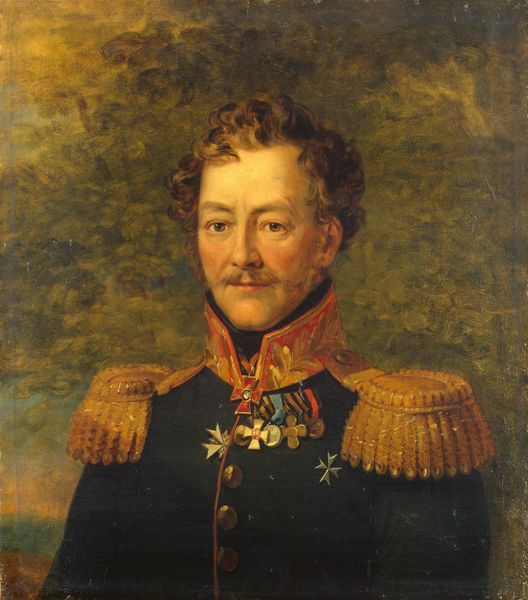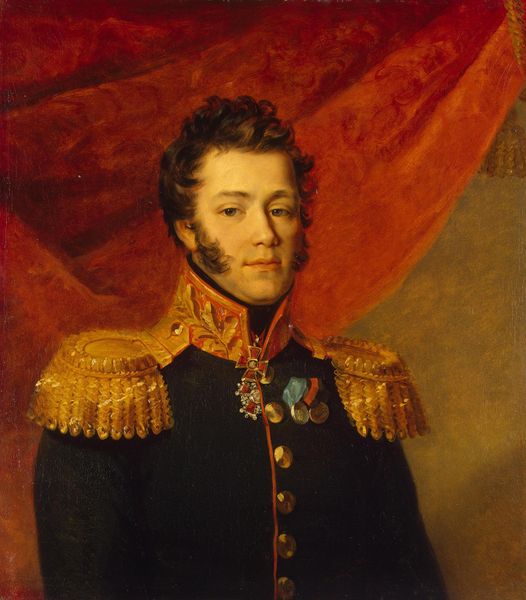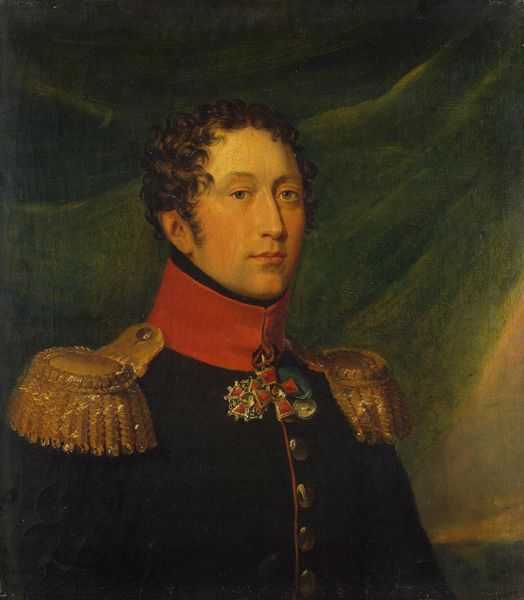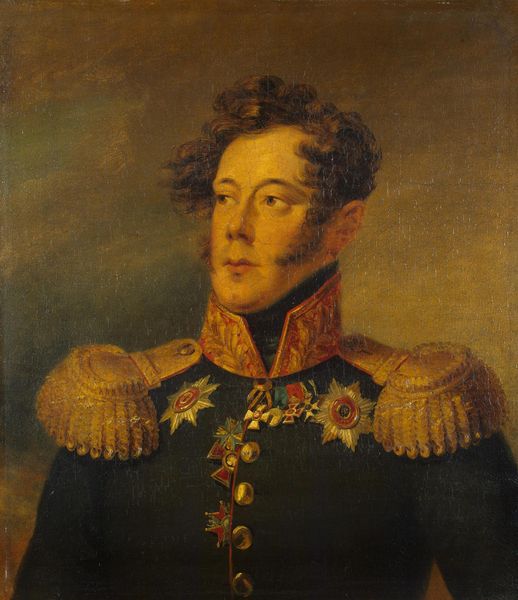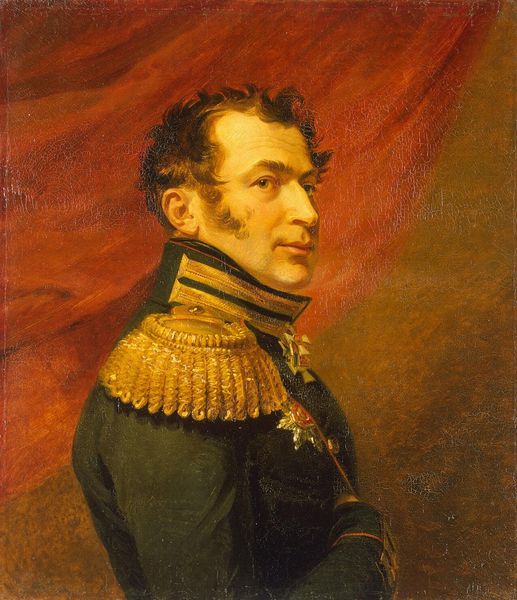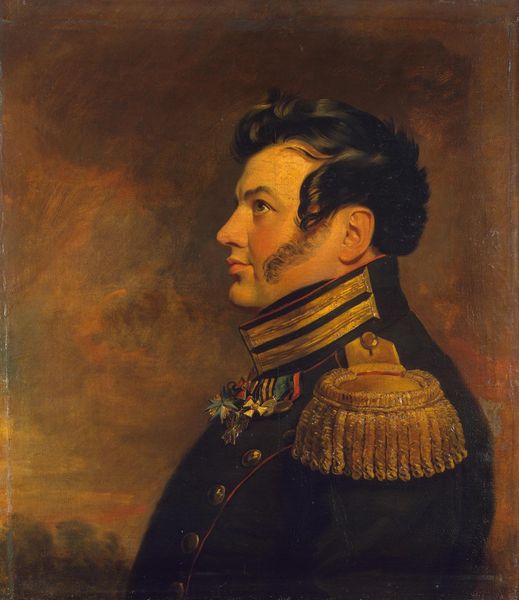
painting, oil-paint
#
portrait
#
painting
#
oil-paint
#
romanticism
Copyright: Public domain
Curator: Let's turn our attention now to a portrait titled "Nikolay Alexandrovich Chicherin, Russian Major General," currently housed here at the Hermitage Museum. The painting is an oil on canvas attributed to George Dawe. Editor: My first impression is of restrained power. It is the kind of painting that uses subtle choices in material to give an impression of military authority, without it seeming overtly aggressive. Curator: The choice of romanticism style certainly adds a layer of symbolic weight to that impression. Look at the colours, composition, and expression, all classic tools that amplify heroism and idealism around the central figure. How do you read the use of oil paint itself in creating the image? Editor: Well, oil allows for a slow, layered application, which really benefits the depiction of these heavily textured military garments, especially those epaulettes. Notice how the light catches the individual strands of gold fringe – it emphasizes not just rank, but also the labour and materials embedded within such status. You also see how light impacts how the subject is framed against the dark colours in the ground, giving way to the overall emphasis of his look on his face. Curator: That's insightful. The medals are incredibly telling symbols, too, speaking of loyalty and duty and honor awarded, hinting at years of service reflected in their presence. Each award functions almost like an adjective modifying our understanding of this man. The portrait creates the possibility for psychological reading—how might a General, defined by a very specific visual framework and social expectation, grapple with selfhood? Editor: I’m equally drawn to the question of access and production in this image. Who paid for the pigments? What kind of brushes were used? What was the process by which someone would sit for this painting at the time and place it was created? Curator: These are fundamental questions. Portraits like this become cultural objects, not only because of what they show but because of what was required to bring them into existence in the first place. The layering is so evident both figuratively and literally, wouldn't you agree? Editor: Absolutely. By focusing on how and why such art gets made, we reveal connections across history that enrich not just the work, but also how we connect with art. Curator: Precisely, it allows the General to address us again across time, no? Editor: It surely does. Thank you for drawing attention to Dawe's insightful work!
Comments
No comments
Be the first to comment and join the conversation on the ultimate creative platform.
